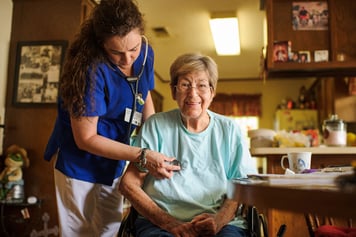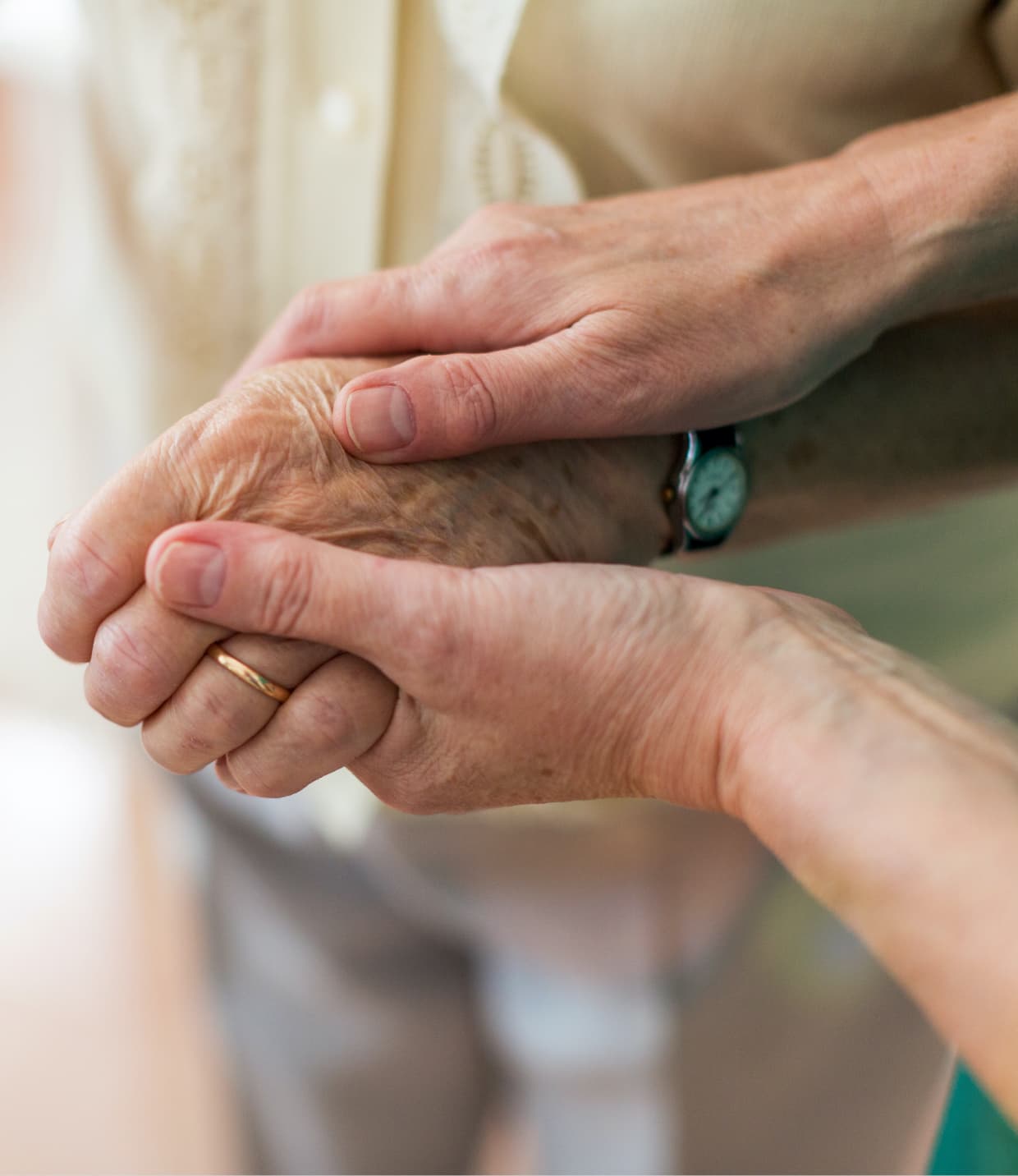Chronic obstructive pulmonary disease (COPD) is a long-term lung condition that makes it hard to move air in and out of the lungs. Chronic bronchitis and emphysema are two of the most common conditions that contribute to COPD. These two typically occur together and can vary in severity among COPD patients.
COPD is a progressive disease that gets worse over time. The goal of treatment is to ease symptoms and improve quality of life.
What are the Symptoms of COPD?
COPD symptoms can appear mild at first and can even be mistaken for a cold. However, there are signs that may point to having COPD.
Early Symptoms
Early signs of COPD include:
- Occasional shortness of breath when active.
- Trouble taking a deep breath.
- A cough that doesn’t go away.
- Wheezing or chest tightness.
- Having more colds than usual or more serious lung infections.
- Needing to clear throat often, especially when waking up.
You may start to find that daily tasks become harder, such as walking upstairs, gardening or bringing groceries inside. If there is no obvious cause for the symptoms and they are progressing, it’s time to see your doctor.
Worsening Symptoms
Symptoms will continue to get worse over time, and may lead to serious lung damage, especially if you’re a smoker. Later stage symptoms may include:
- Fatigue or extreme tiredness most of the day.
- Blue lips or fingernails.
- Losing weight without trying.
- Swollen feet, ankles, or legs.
COPD Flare-Up Symptoms
There are periods of time when symptoms suddenly get worse with COPD. These are called exacerbations or flare-ups which may happen a few times a year, and last for a couple of days or even weeks. Flare-ups may be triggered by breathing in smoke, pollen, chemicals or cold air from bad air quality, or even a cold or the flu. Flare-up symptoms can include:
- More trouble than usual breathing.
- Wheezy or noisy breathing.
- Coughing more than usual.
- Noticing a difference in color, thickness or amount of phlegm you cough up.
- More tired than usual or have trouble falling asleep.
What Causes COPD?
Typical causes of COPD occur from being 40 years of age or older, having at least some history of smoking, inhaling second-hand smoke and other fumes or chemicals and dust found in many work settings. Genetics can also play a role even if you’ve never smoked or been exposed to toxic fumes.
Smoking
Although not everyone who smokes will get COPD, your risk is greater the longer you smoke and the more tobacco products you use. Smoking is the number one cause of COPD, whether you’re a current or former smoker. By quitting smoking, you can slow the progression of COPD and make treatments more effective. After only a few weeks of not smoking, your breathing, coughing and clogged sinuses can improve.
Harmful Pollutants
COPD can also be caused by breathing in harmful pollutants, such as dust, fumes or chemicals. This often occurs in the workplace setting but can also occur at home. Keep an eye on ammonia, asbestos, carbon monoxide, dust and fumes when at work, and dust smoke, cleaners, spray products, mold and bacteria when at home. Keep in mind the following for removing harmful products from your home:
- Do not use plug-in air fresheners.
- Find more natural, less toxic cleaners.
- Change filters in dryers, refrigerators, furnaces and heating vents often.
- Avoid using fireplaces and wood stoves.
- Avoid using sponges or replace them often.
Genetics
Alpha-1 antitrypsin deficiency is a disease known to cause COPD. Alpha-1 causes a much lower level of blood protein called alpha-1-antitrypsin. This protein protects the lungs from irritation caused by breathing in toxins. Alpha-1 is a genetic disorder and is passed down from parents to children. A simple blood test can detect if you have alpha-1, and there is a specific treatment plan that can slow the progress of COPD for those with the disease.
Living with COPD
Living with COPD can be a challenge, but with the proper tools, it shouldn’t get in the way of a regular life. By maintaining a good diet, the right care and patience, you can learn to manage the symptoms of the disease.
Eat healthy foods
When managing COPD conditions, an anti-inflammatory diet can help reduce inflammation in your body by supporting the balance of bacteria in your gut. Antioxidant-rich foods, such as dark-colored fruits and vegetables can protect your airways and heal some of the damage caused by inflammation. Here are some foods to consider when trying an anti-inflammatory diet:
- Variety of fruits and vegetables
- Whole grains such as oats, barley, whole grain wheat, buckwheat and quinoa
- Beans and lentils
- Nuts and seeds
- Fish and seafood
- Olive oil
- Antioxidants such as coffee, tea, garlic, ginger and other herbs and spices.
COPD can affect how much you are able to comfortably eat at any one meal. This decrease in food intake can result in weight loss and decreased energy. Steps that may help include:
- Eat several smaller meals during the day instead of three larger meals.
- Eat slowly. This will make it easier to breathe.
- If you are losing weight, talk to your care team about special drinks or additives that may help you get the nutrition you need.
Exercise regularly
Although there is no cure for COPD, exercise can improve symptoms and overall health by promoting blood circulation and helping the heart send oxygen to the body. Exercise also strengthens the respiratory muscles, making breathing easier. The best type of physical exercise for those with COPD include:
- Stretching: Stretching is great for both warming up and cooling down after a workout, while relaxing and improving flexibility.
- Aerobic exercise: Aerobics allows the body to use oxygen more efficiently. Swimming, walking and cycling are all good examples and COPD patients should aim to do 30 minutes of exercise five times a week.
- Resistance training: By strengthening muscles that help with breathing, resistance training uses resistance bands and weights, or you can use body weight if you don’t have access to weights.
People with COPD get tired more easily. Pacing activity throughout the day can help, as well as looking for ways to make tasks easier. Keep in mind these tips for breathing while exercising:
- Inhale before beginning the exercise and exhale through the most difficult part of the exercise.
- Take slow breaths and go at a manageable pace.
- Purse the lips while breathing out.
Avoid smoke and air pollution
On top of not smoking, avoiding places where others smoke is essential, as secondhand smoke can contribute to lung damage. Air pollution also contributes to lung damage and irritation, be sure to check your weather forecast for daily air quality updates.
The best way to improve air quality in your home is to improve ventilation. Consider opening your door and windows on good air quality days for a few minutes at a time. Air cleaners and filters can also improve indoor air quality.
Although COPD has no cure, keeping track of symptoms alongside implementing lifestyle changes and daily habits, you can slow the progression of the disease and start to feel better.
Learn more about our COPD program and connect with us today.





